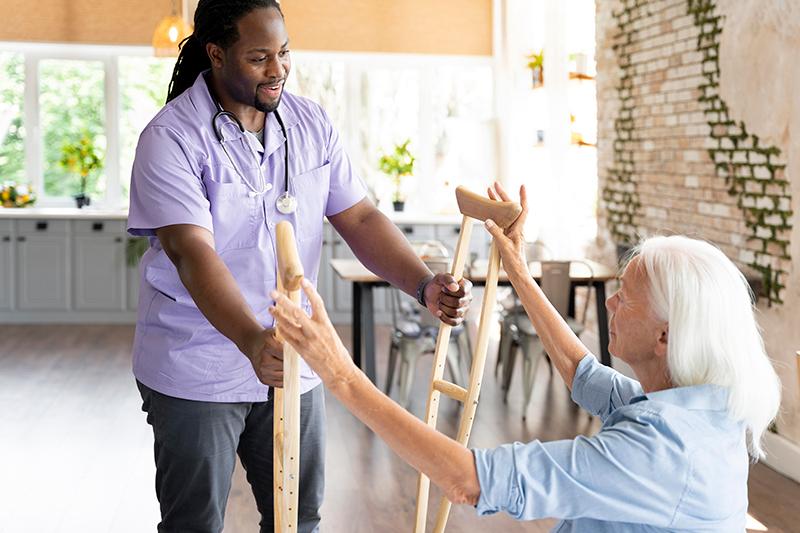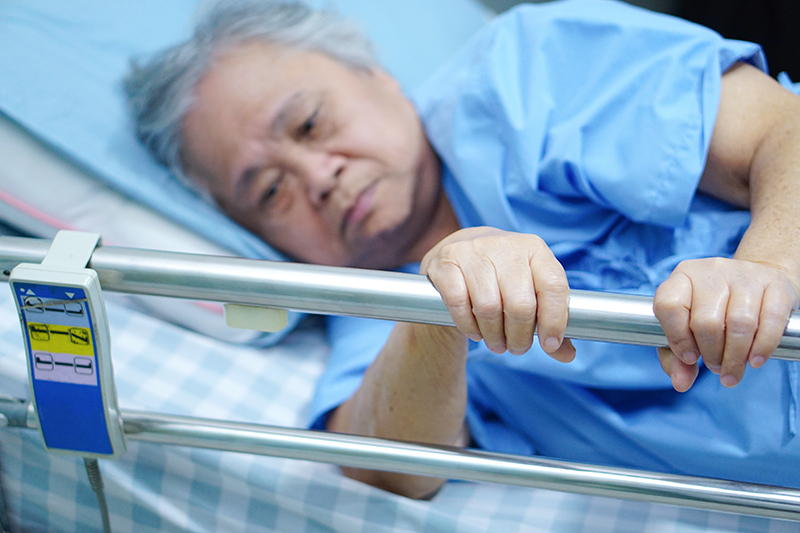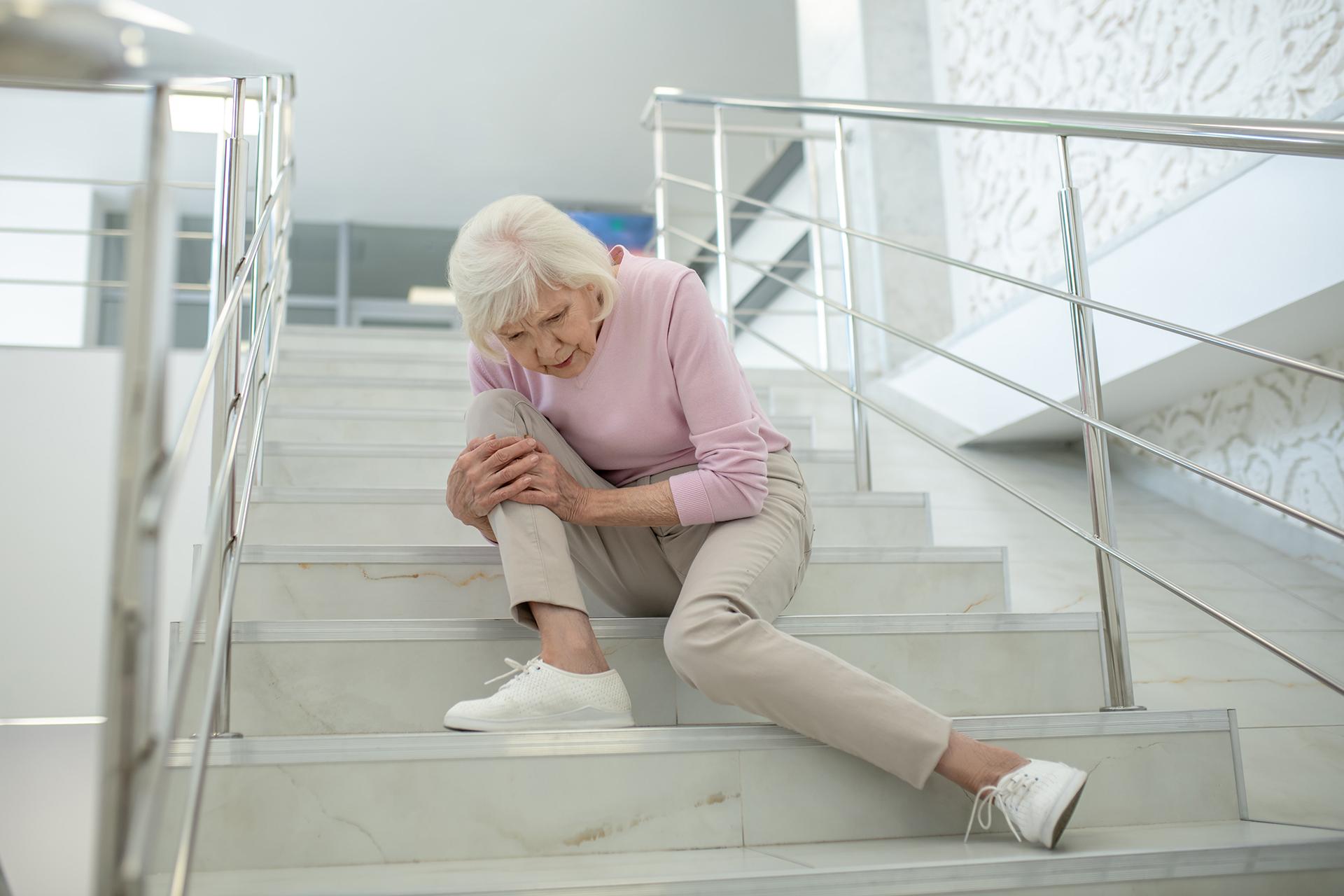Fall Prevention in Medical Facilities
Fall prevention in medical facilities is of significant importance for the patient as well as the health industry. The results of a fall can cause an increase in the length of stay in the facility, increase costs for the patient and the medical facilities, and they can be especially detrimental to our seniors. Falls can have devastating consequences, a torn tendon, broken bones, as well as loss of life. Fortunately, there are a few steps medical facilities can take to minimize the risk of falls and prevent patient injuries. Allow us to share four (4) prevention interventions and explain how they can be used to help keep your patients and residents safe.
Before we give you the four prevention interventions, please read the following story:
“In our home, we must walk up and down 14 stairs to enter or exit the main level to and from the garage. Should we live in a one level home? Yes, probably. I have repeatedly asked my husband to keep one of his hands free to hold the railing when walking up and down the staircase or at least turn the lights on so that he is able to clearly see the stairs. ‘Slow down and watch where you’re going!’ etc. are among some of the words of caution I have used. However, he felt I was too cautious. Well, it finally happened. His foot missed a step, resulting in him falling on his knee and tearing a tendon.
After undergoing surgery and physical therapy, he is progressing well. I even overheard him telling his friends that he will now use caution and do the things I’ve asked him to do to prevent falling again.”
Fall Prevention #1: Fall Risk Assessment.

Performing a comprehensive fall risk assessment is the initial step a medical personnel should take to reduce the likelihood of injury from a fall in any medical facility. In addition to assessing the medical and physical condition of the patient, their fall history should be considered. A patient that has had a prior fall is likely to fall again, and unfortunately, increasing the possibility of a more devastating injury.
Performing a comprehensive fall risk assessment is the initial step a medical personnel should take to reduce the likelihood of injury from a fall in any medical facility. In addition to assessing the medical and physical condition of the patient, their fall history should be considered. A patient that has had a prior fall is likely to fall again, and unfortunately, increasing the possibility of a more devastating injury. Some medical facilities use a specific fall risk assessment tool. Regardless of the tool of choice, each patient should be screened for fall risks upon initial admission.
- Assess mental status.
- Is their judgment impaired?
- What is their level of orientation?
- Are they able to communicate needs?
- Check for vision or hearing deficiencies.
- Are they legally blind?
- Do they wear prescription glasses?
- Are they legally deaf?
- Do they wear hearing aids?
- Assess mobility.
- Is their balance impaired?
- Is a mobility aid required (wheelchair, walker, etc.)?
- Do they require assistance to move from bed to chair, chair to bed, etc.?
- Review medications.
- Are they taking any medications that may affect mental ability (anti-psychotics, sedatives)?
- Are they taking medications that will alter blood pressure, blood sugar?
- Are the taking five or more drugs? Polypharmacy can increase likelihood of adverse drug event, impair cognition, and increase fall risk.
- Assess disease-related symptoms.
- Dizziness
- Blood pressure changes
- Bladder and bowel control
- Weakness
Fall Prevention #2: Primary Interventions.

After completing a Fall Risk Assessment for the patient or resident, the next step is to develop an Individualized Plan of Care. In the review of medical records, I have seen what I call “cookie cutter” care plans. These are care plans that are copied directly out of the policy manual without the consideration of the specific needs of each patient.
For example, the assessment of Mr. John Doe revealed he is often confused, has short-term memory, and an unsteady gait. Moreover, Mr. Doe also wobbles as he walks. Interventions on the care plan read, “place nurse call bell in easy reach and remind the patient to call for assistance.” Though these are important considerations; Mr. Doe is often confused and at times has no recall of where he is and unable to remember a topic from one sentence to the next. Mr. Doe is being relied upon to remember to call for assistance. In addition to this, there were no interventions included in his Plan of Care addressing his unsteadiness.
It is impossible to spell out all the possible interventions for fall injury prevention in this writing. Developing an Individualized Plan of Care unique to each patient is key. Nursing staff must identify the need and lay out a plan of action to address the need. After considering Mr. Doe’s medical diagnosis, among the likely interventions to prevent a fall injury for Mr. Doe are a consult for physical therapy, provide assistance in getting into and out of the bed and chair, provide assistance when ambulating, scheduled supervision, and being proactive in ascertaining his needs.
Once the Individualized Plan of Care has been developed, regular assessments should be done to evaluate for possible changes to physical and medical conditions. Depending upon the type of medical facility there may be a specific schedule for reassessments such as in the nursing homes. Of course, this scheduled assessment does not eliminate the day-to-day assessment of the patient or resident. Should a change in medical condition arise, requiring a change in the interventions, the nurse should notify all staff and make the necessary changes on the Plan of Care. Additionally, medications should be reviewed regularly for any side-effects or interactions which could increase the risk of falling.
Fall Prevention #3: Basic Interventions.
Some interventions are basics in reducing the likelihood of fall related injuries in medical facilities.
- As impaired vision can impact falls, ensure there is adequate lighting in all areas.
- Provide non-slip footwear and ensure all areas are free of clutter and tripping hazards.
- Place the nurse call bell, water pitcher, and frequently used items in easy reach.
These basic interventions may become primary interventions based upon the assessment and the needs of the patient. Some interventions should be a consideration for all that are at risk of fall related injuries. It is the specifics that drive an adequate Individualized Plan of Care.
Fall Prevention #4: Additional Considerations.

Additional considerations for fall prevention in medical facilities include:
- Motion sensors for chairs and beds
- Low beds
- Slip resistant floor strips
- Concaved mattresses
Though motion sensors are interventions, there is controversy regarding the use of motion sensors. They are being considered restraining devices as they may cause fear, anxiety, and likely restrict movement if the alarm is audible to the patient. Desensitization of the staff to the alarms are also concerns.
These are just a few additional interventions to employ based on the patient’s fall risk assessment. It is also essential to provide staff members with appropriate training on fall prevention interventions and provide them with the necessary tools and equipment needed to respond quickly in the event of a fall. Falls can be costly as well as cause debilitating consequences to the patient. By taking proactive steps and implementing effective fall prevention interventions, staff can greatly reduce the risk of preventable falls.
If you have questions concerning whether adequate fall prevention measures were taken in a particular case, contact E Wills Legal Nurse Consultants for assistance. Our education and experience enable us in determining whether negligence played a role in a fall incident.

